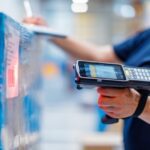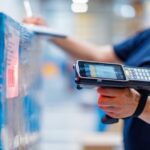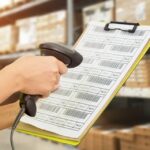Asset tracking systems offer the groundwork for effective inventory control, maintenance management, resource utilisation, and a slew of other advantages that streamline processes. Today’s barcode scanners are more functional and durable than earlier generations, not to mention the convenience provided by Bluetooth connectivity, cordless capabilities, and other features that enable asset management in-house, in the field, and even in hostile situations.
Therefore, choose reliable barcode readers to run your business inventory successfully. Being used in practically every industry, for applications ranging from point-of-sale scanning to standard asset management in office environments, and to monitor equipment maintenance and repair programs in industrial settings, this type of scanner nowadays comes in many forms and types, plus there are many brands making it, each claiming to be a reliable one. To make the right selection, there are some important factors to take into account when purchasing.
What to Look for: Factors to Consider
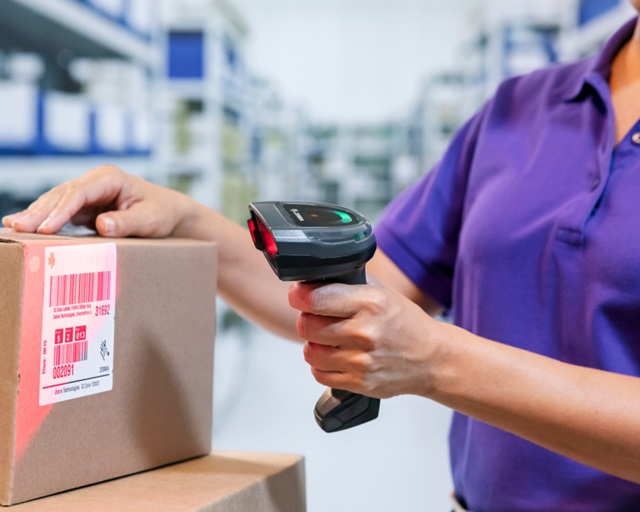
Forms
Scanners use a trigger mechanism for simple aim-and-scan operation, making installation simple. In most cases, all you have to do is plug in the cable and the reader will begin to operate. However, one of the most amazing features of barcode readers today is their cordless capability. They communicate wirelessly with a base station or charging cradle connected to the PC.
Again, they are simple to set up: link the base station to the host computer, then connect the scanner to the base station. Cordless scanning also enables for increased mobility and productivity, especially with scanning outdoors, on the floor, or in a cross-facility application. Furthermore, they reduce the clutter of cords and potential trip hazards connected with corded machines.
Another impressive attribute of these advanced scanners is their robustness. They are available for all work environments. Basic models are designed for retail, office, and light industrial uses. On the other hand, scanner makers understand that devices like these go through wear and tear, so even standard models are designed to withstand drops onto concrete.
For instance, an industrial handheld scanner with IP65 sealing can tolerate dust and water in tough industrial conditions. These durable devices can endure a 5000 2m fall, even in freezing temperatures. Other types include presentation scanners, mobile devices, in-counter scanners, and fixed mounts. Presentation forms are designed for long-term, broad-based reading. A presentation scanner is designed to be placed on a counter and read the barcode of each passing item. Aiming is not required, unlike with handheld devices.
To help you save money and time and make your business thrive, rather of hauling everything via the same check-in and checkout terminals, mobile unit barcodes can be read from anywhere on a warehouse floor using a portable device app and remotely entered into a company’s computer system. An in-counter model, like a presentation scanner, is a stationary device that allows clerks and customers to quickly and easily scan barcodes.
The difference here is that an in-counter barcode reader is intended to be placed into the top of a checkout counter. Fixed-mount scanners are designed for integration into large automation systems and specialist applications such as warehousing, manufacturing, and logistics. These designs are often integrated inside a kiosk or mounted on a conveyor line.
Types
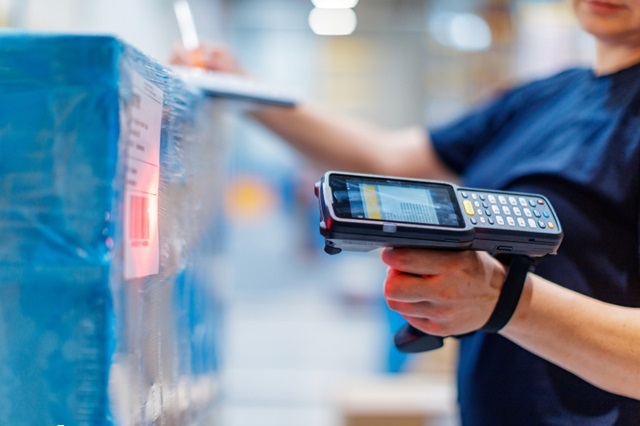
Today, there are numerous types of stationary and mobile scanners. The laser scanner is one of the most modern barcode-reading machines. Laser readers can read linear 1D barcodes from a distance of six inches to two feet. In contrast, an image-based reader takes a photo of a barcode with a small digital camera. A linked computer system examines and reads the acquired images for inventory purposes.
A 2D image scanner, on the other hand, is similar to a regular image scanner, but it can scan all forms of barcodes, including 1D, 2D, and stacked. Because the barcode can cross the scanner in any direction, be it vertical, horizontal, right side up, or upside down, it is the easier device to read with. When narrowing down your barcode scanners online, you will learn that some types that use Charge Coupled Devices (CCD) have a row of small sensors in the front of the reader.
The CCD scanner generates waveforms that correspond to specific bars and spaces, which are decoded by the scanner and then transferred to the computer system. The tip of a pen or wand barcode reader has both a light source and a photodiode. A waveform is created by dragging the tip across a barcode corresponding to the width of specified spaces and bars, which is then decoded and entered into the computer system.
Strength
The physical longevity of a reader is a significant consideration when choosing one over another. Display and in-counter scanners commonly found in retail shops and grocery stores are designed to endure the abuse that such environments may dish out. As a result, such devices can usually be counted on to work as intended for the duration of their lifespan.
For more demanding environments, such as warehouses, factories, and construction sites, a device with greater built-in ruggedness is necessary. A scanner intended for severe environments is typically recognisable by a red or yellow casing. While such a gadget will be more expensive at first, the longer lifespan and low maintenance will outweigh the higher initial cost over time.

